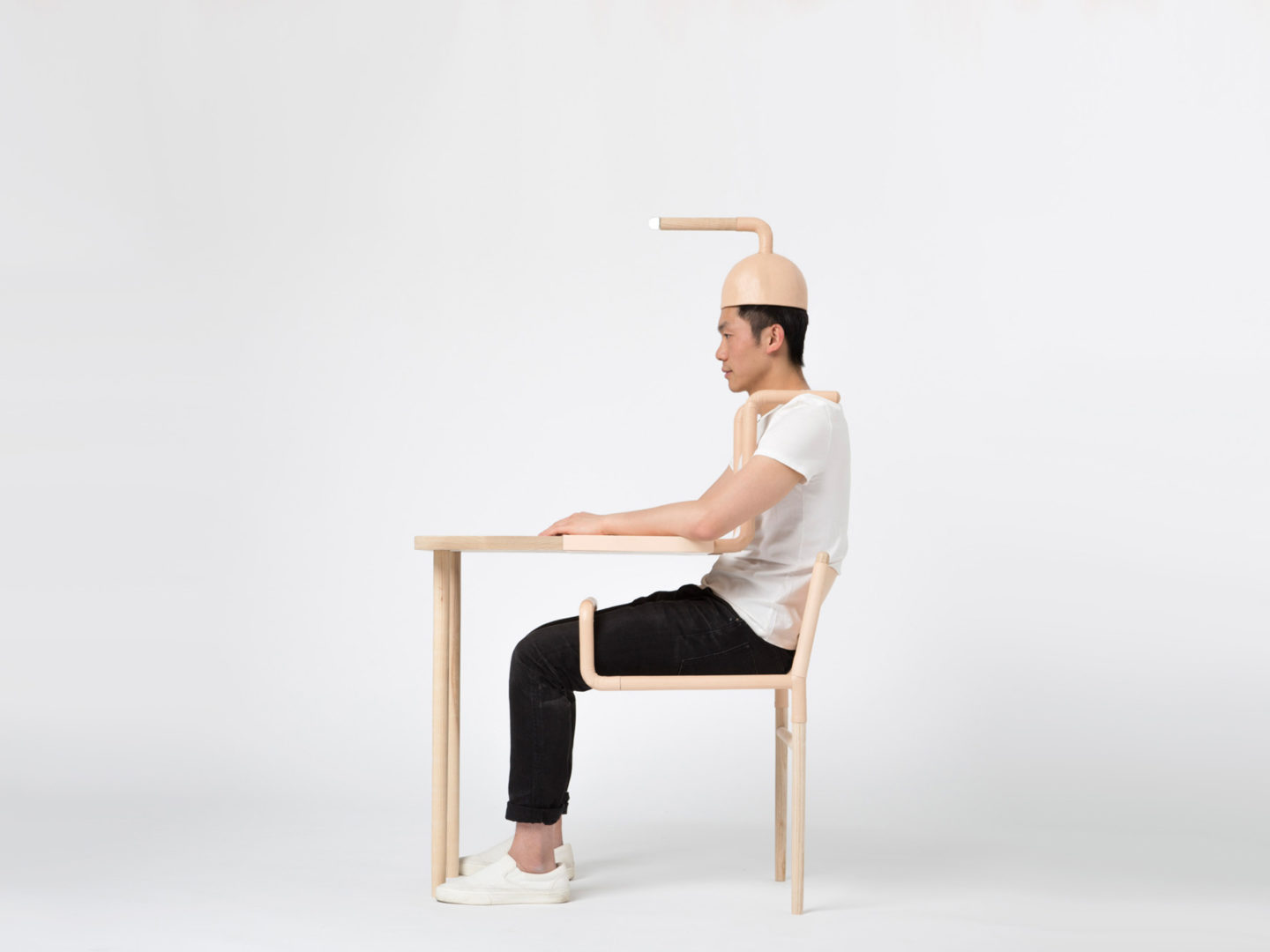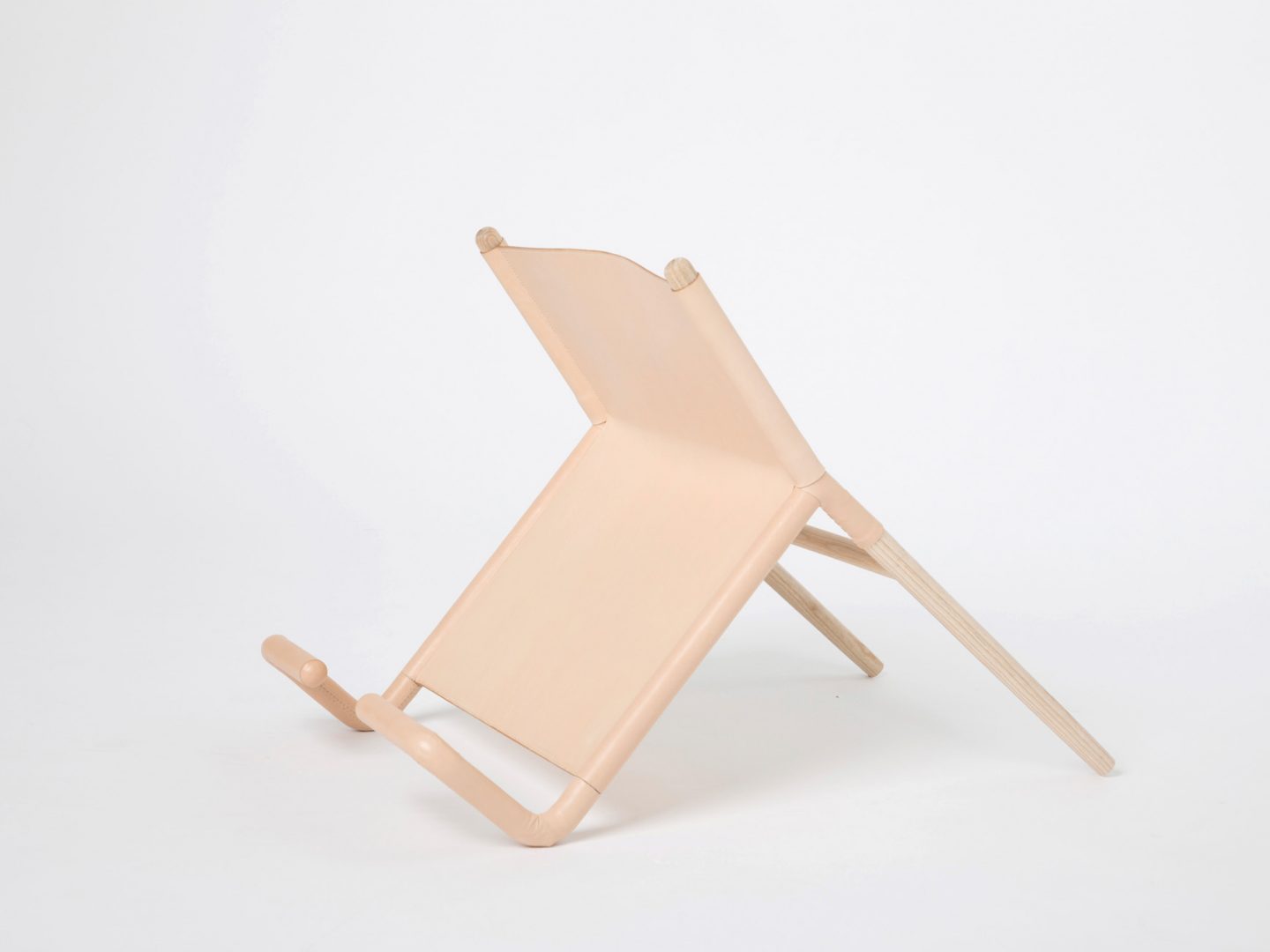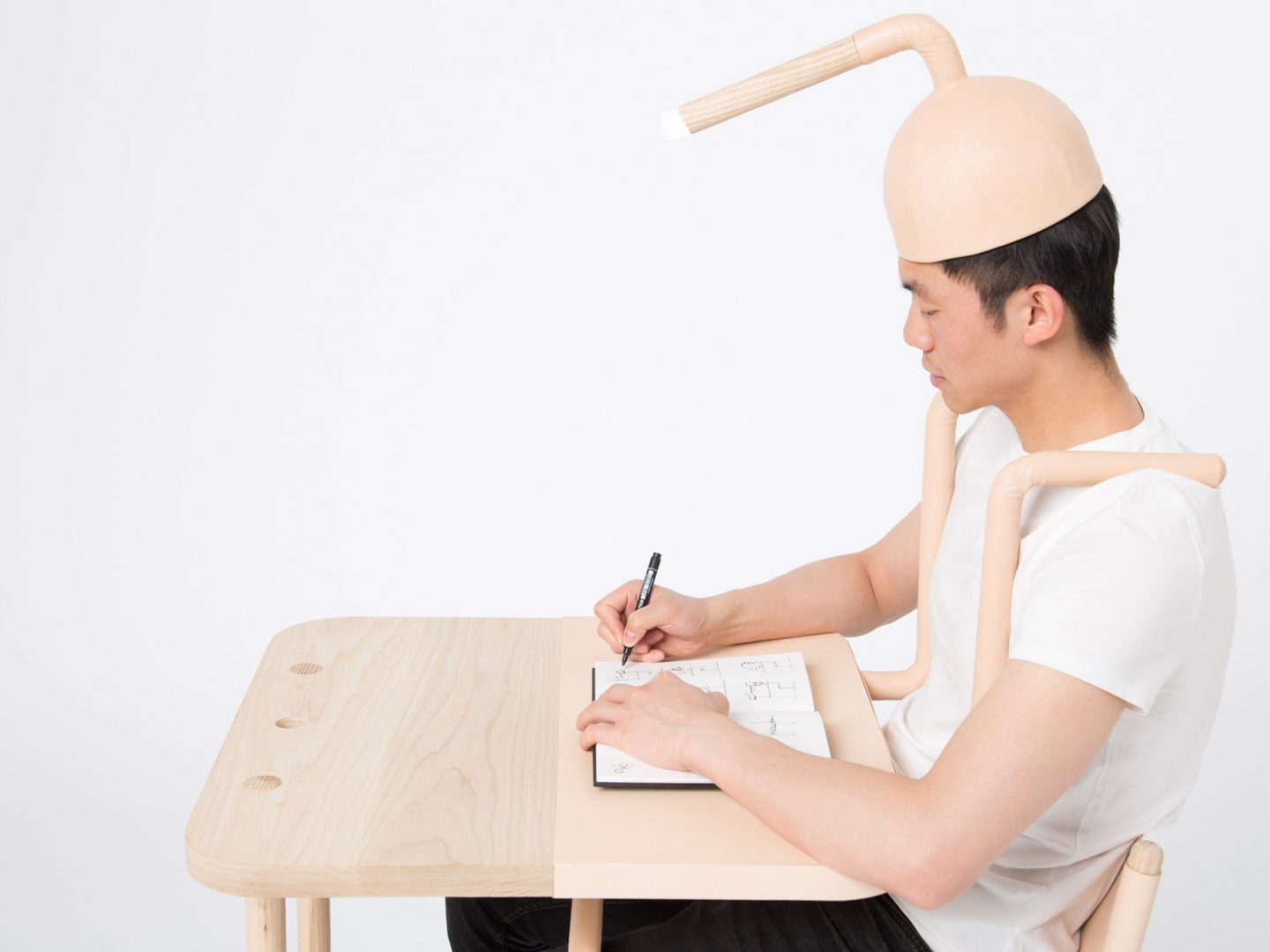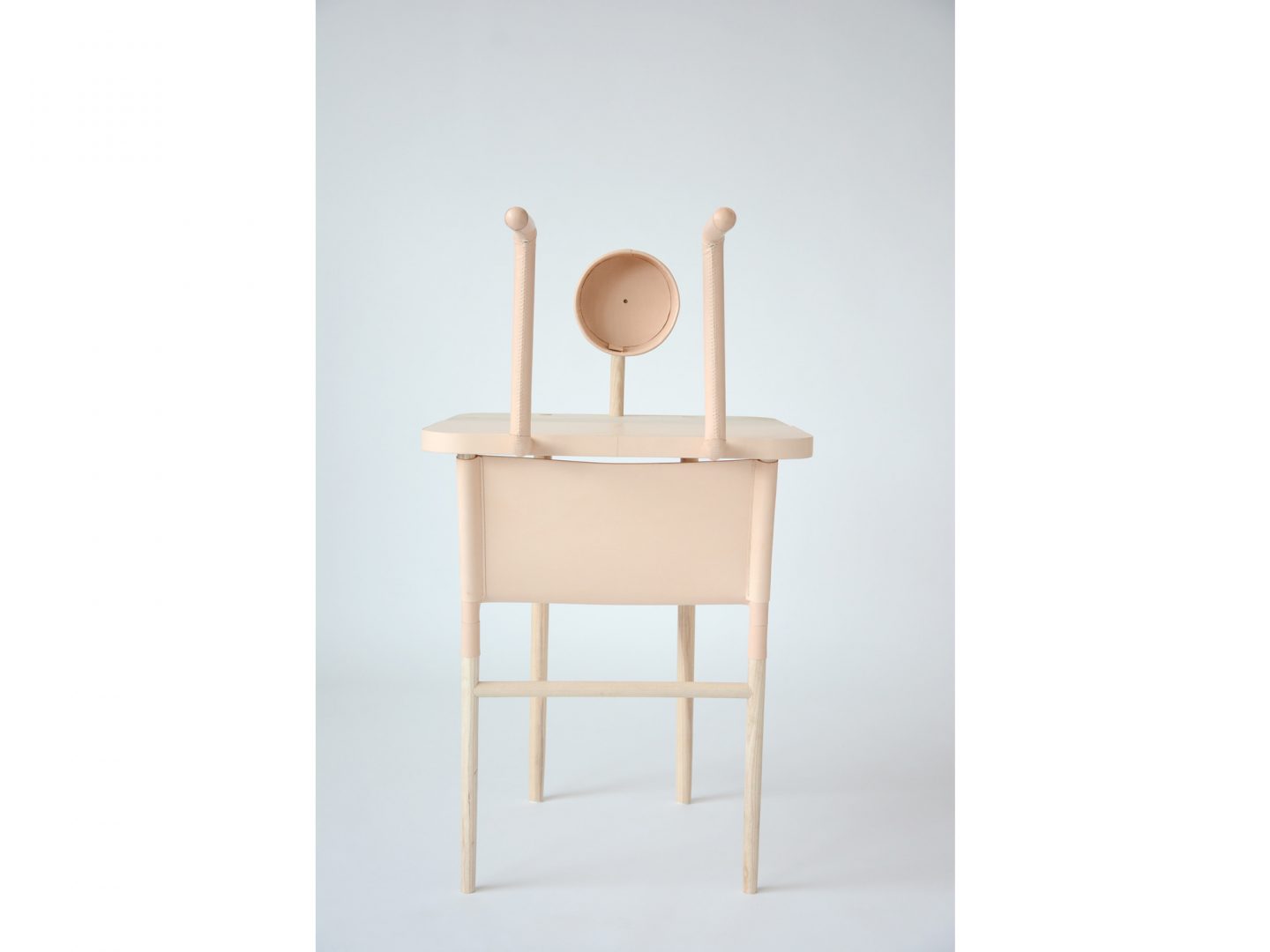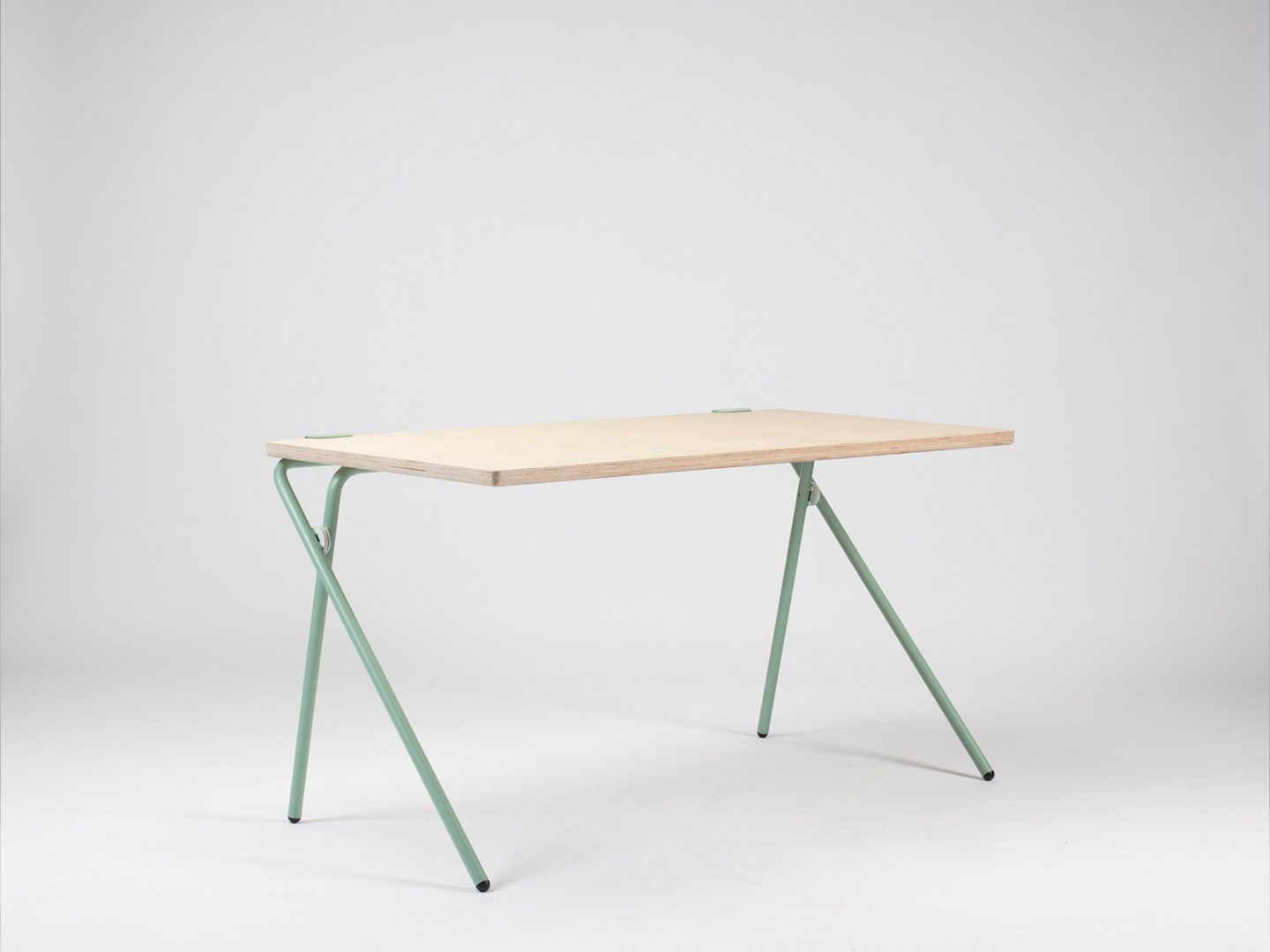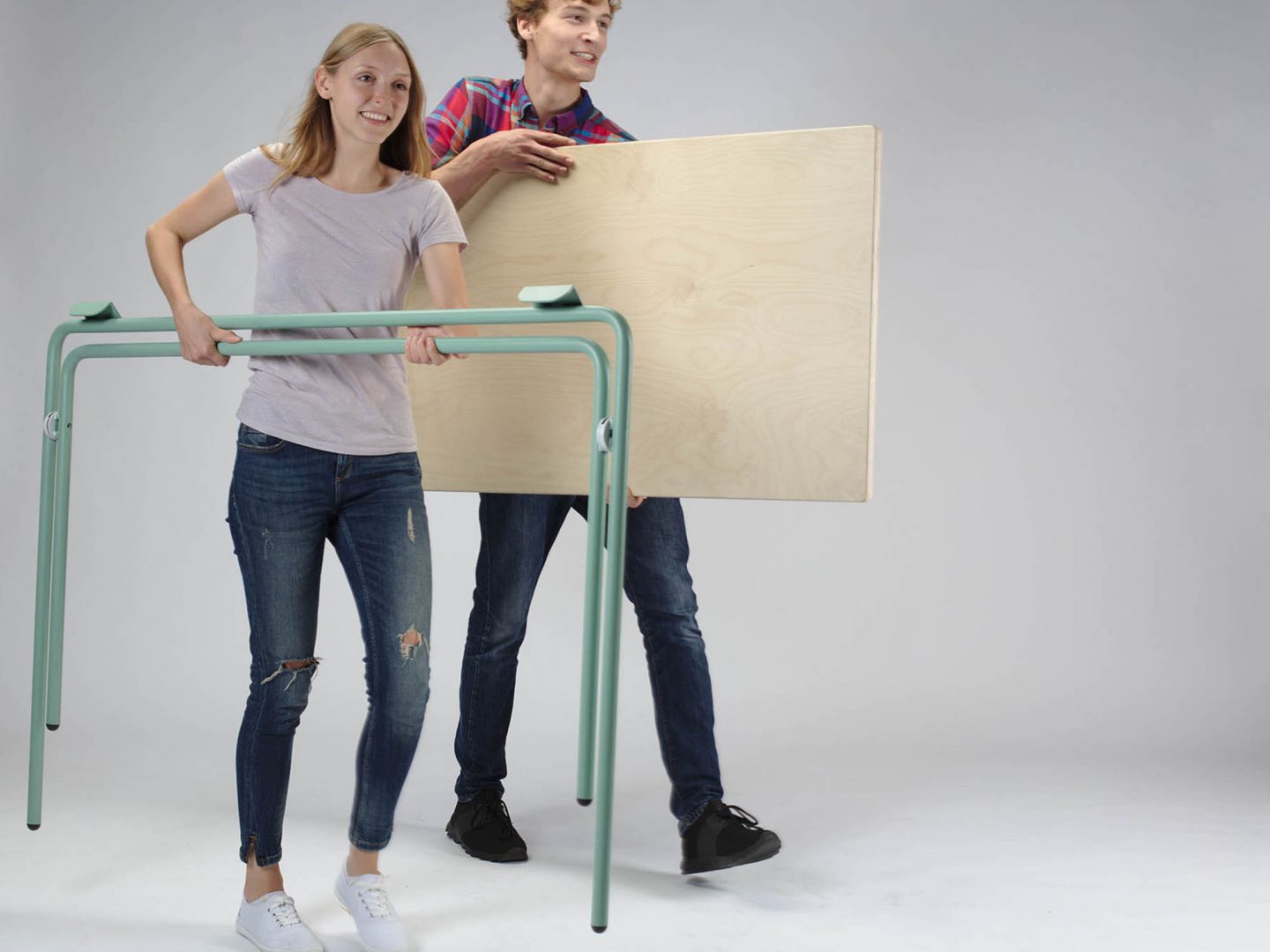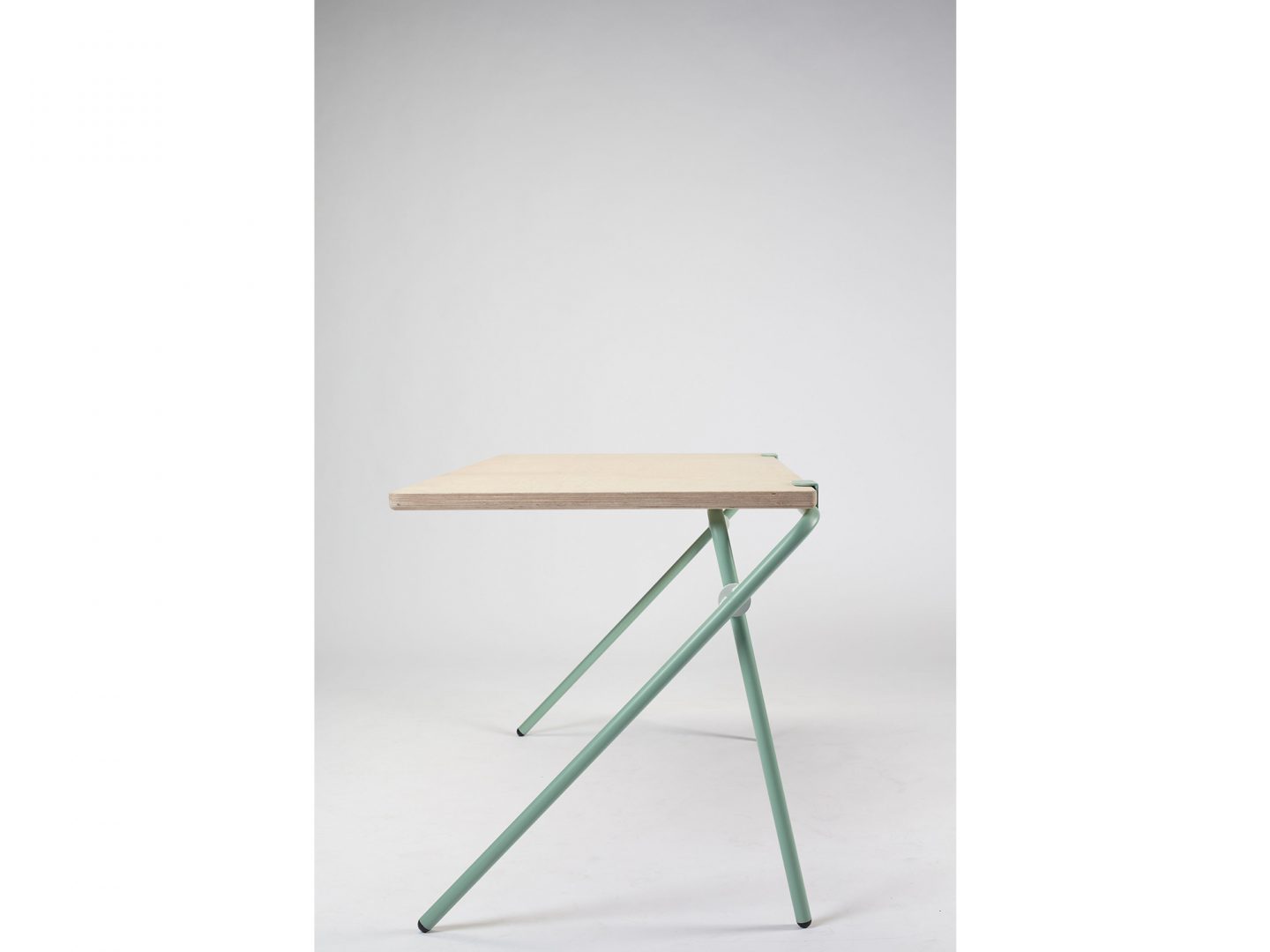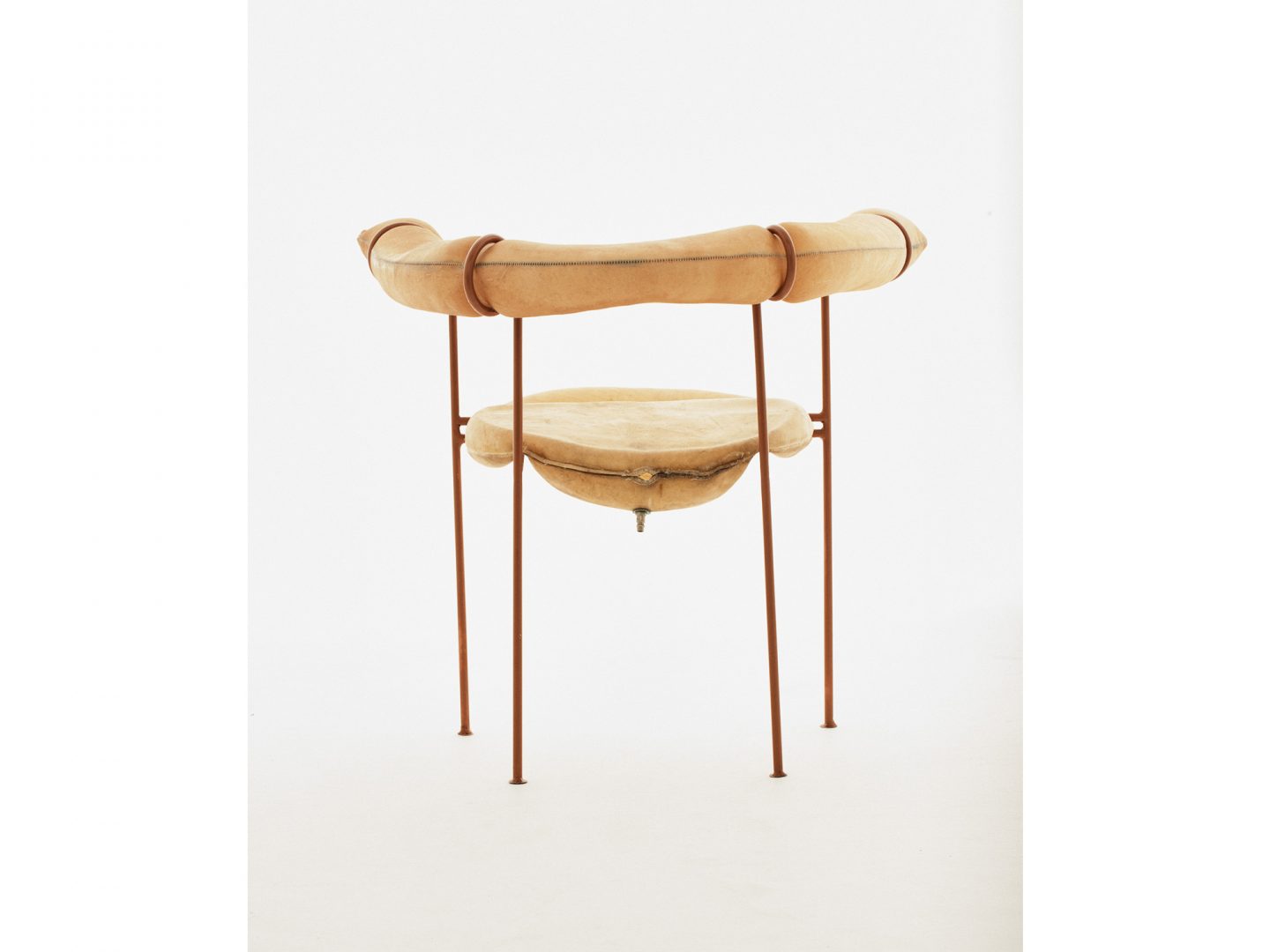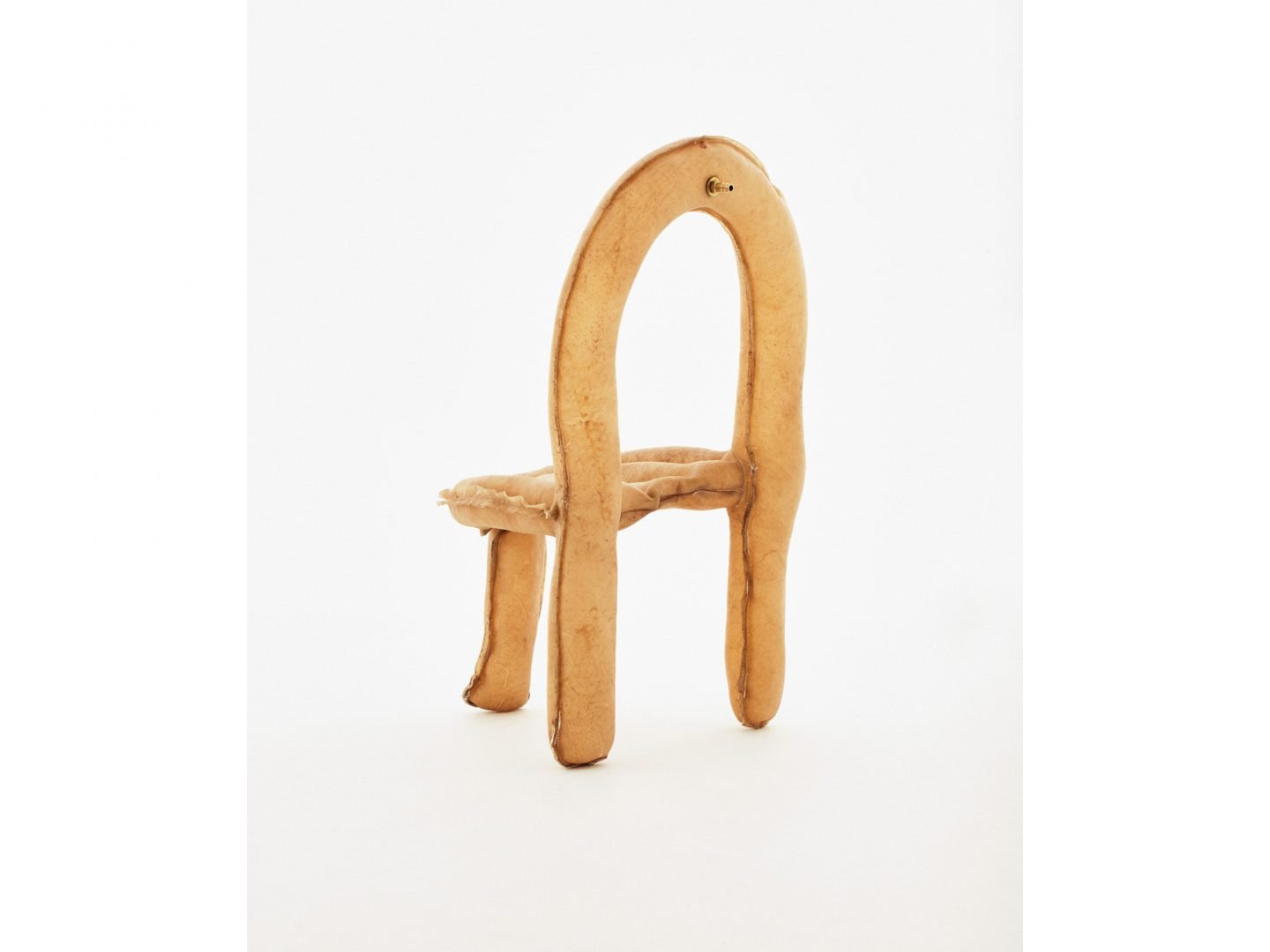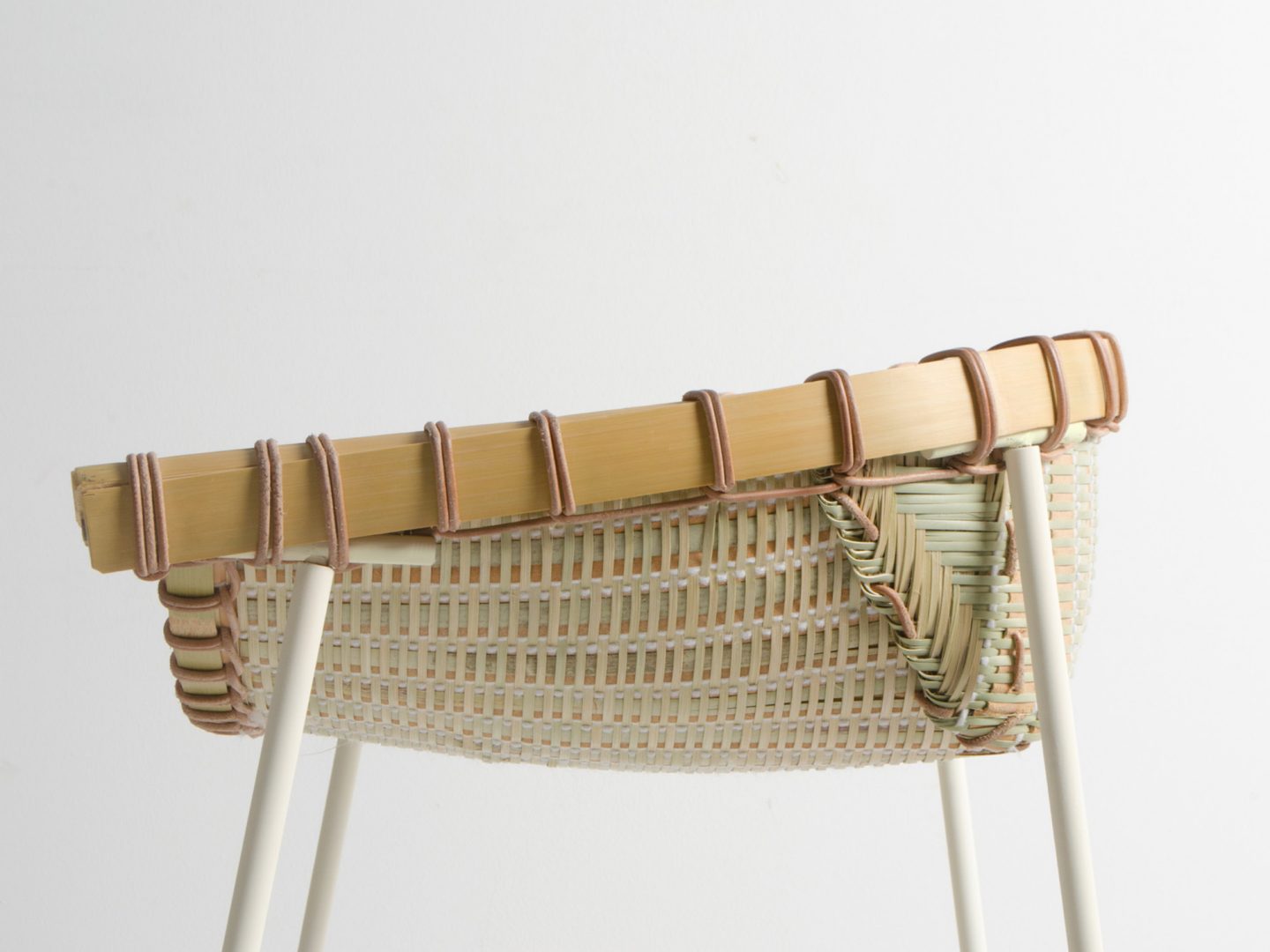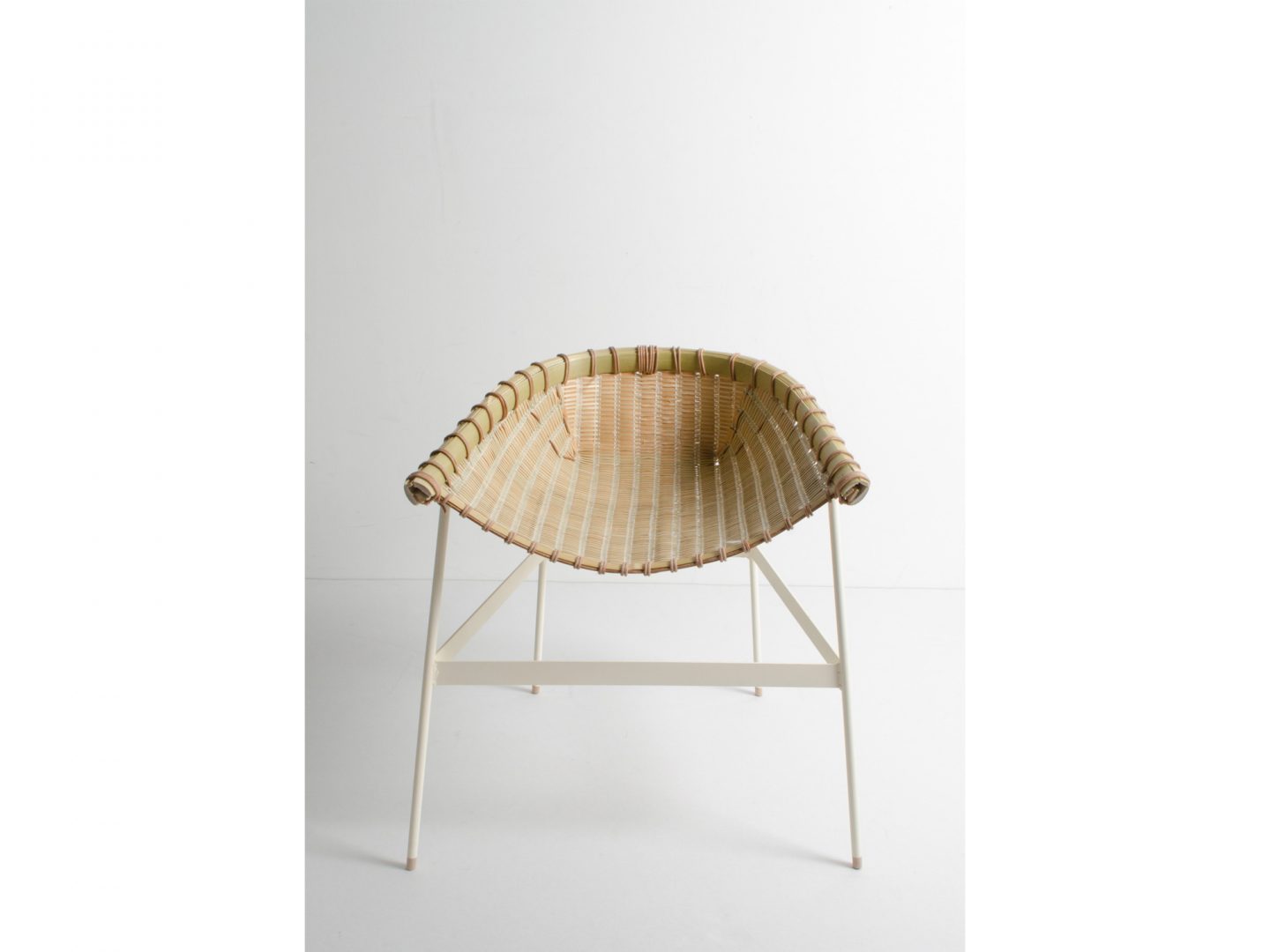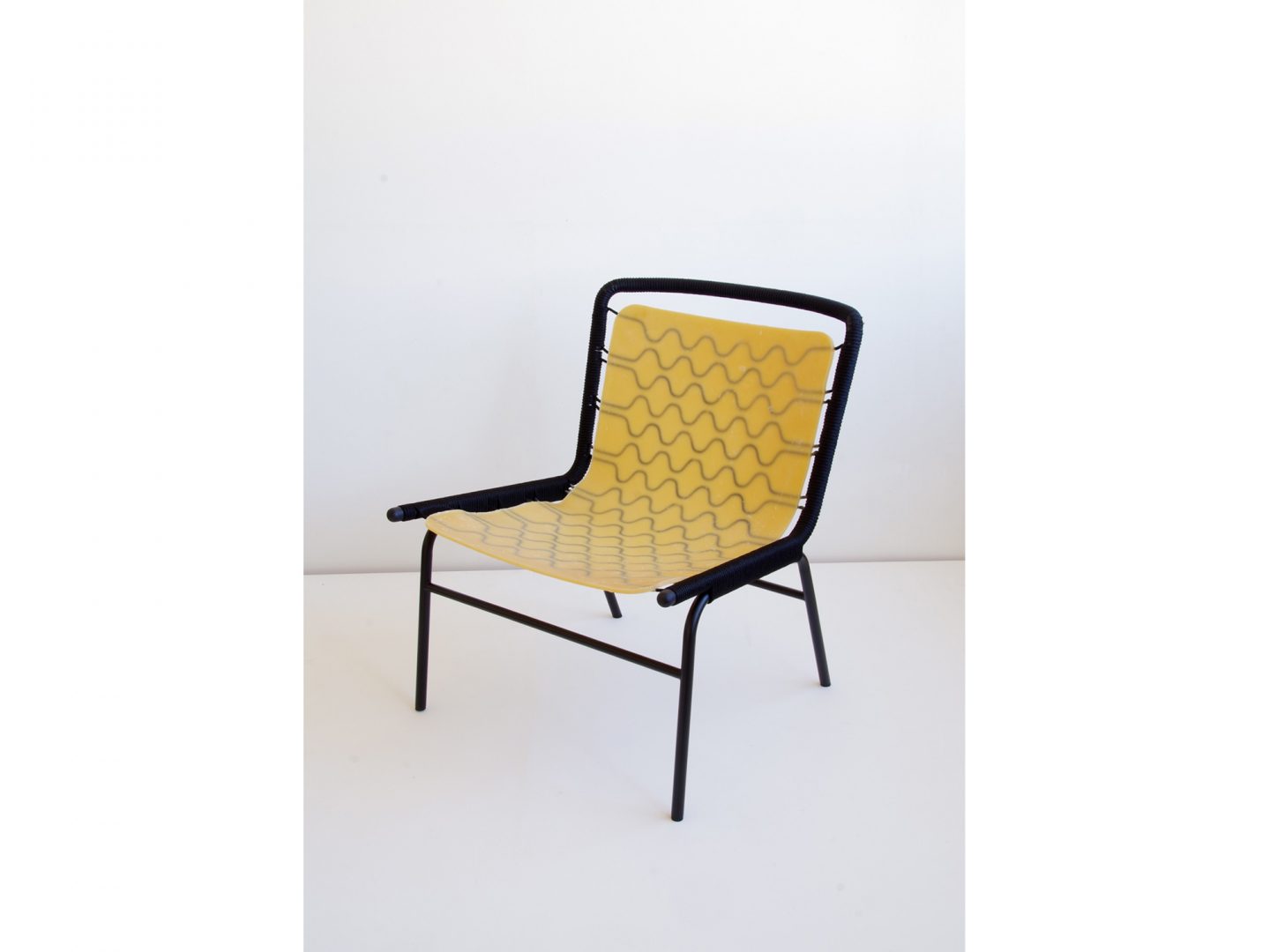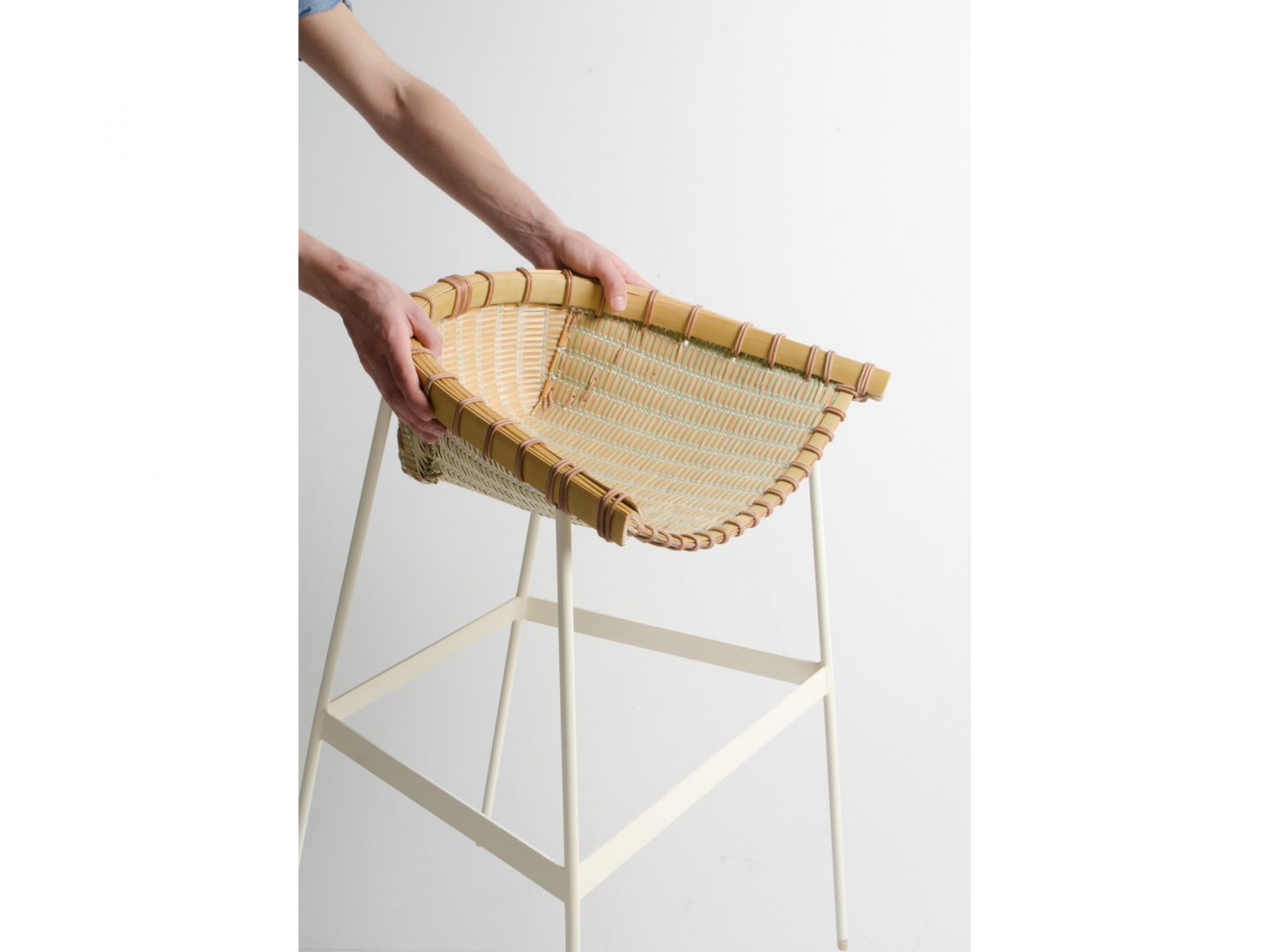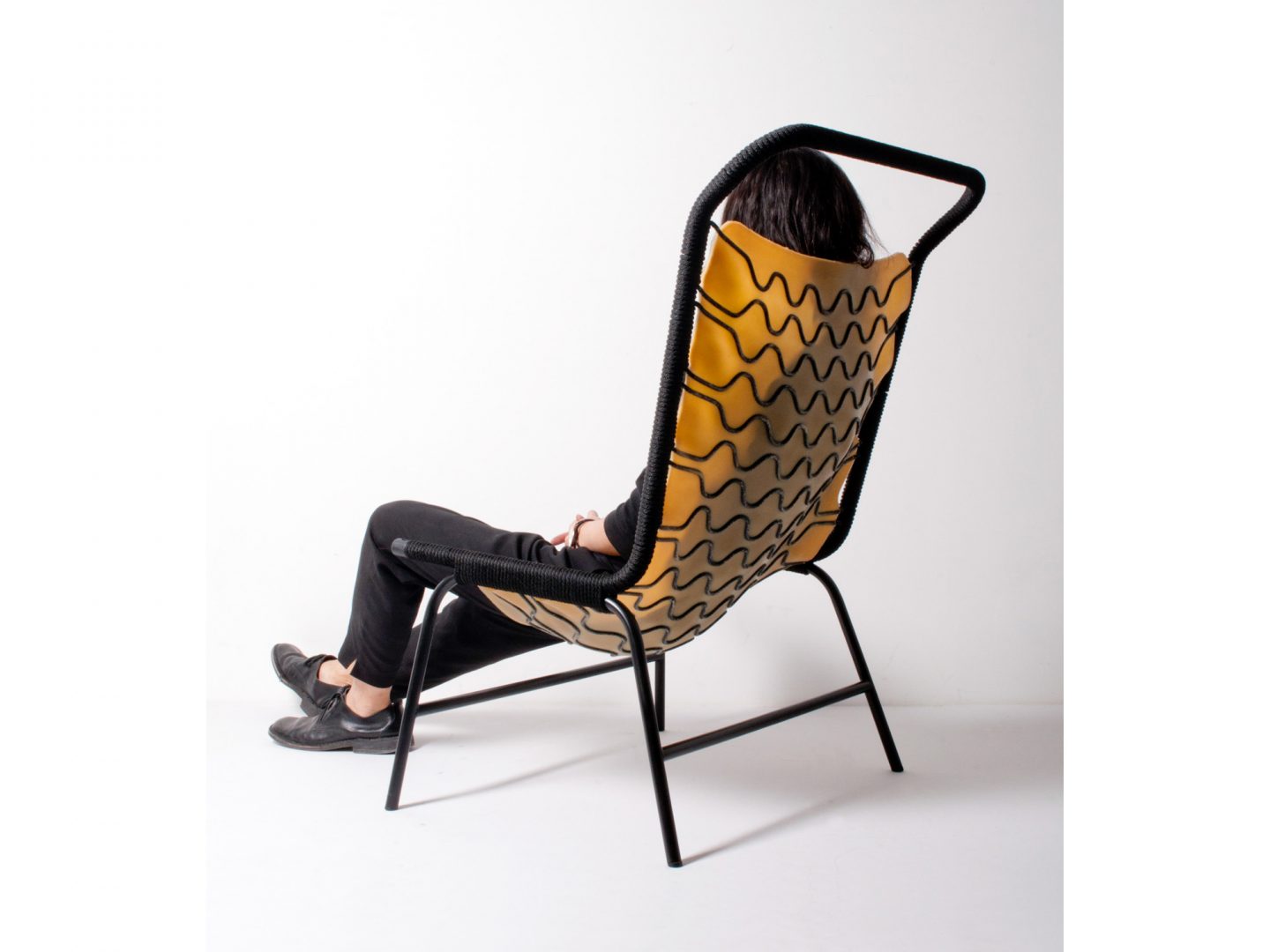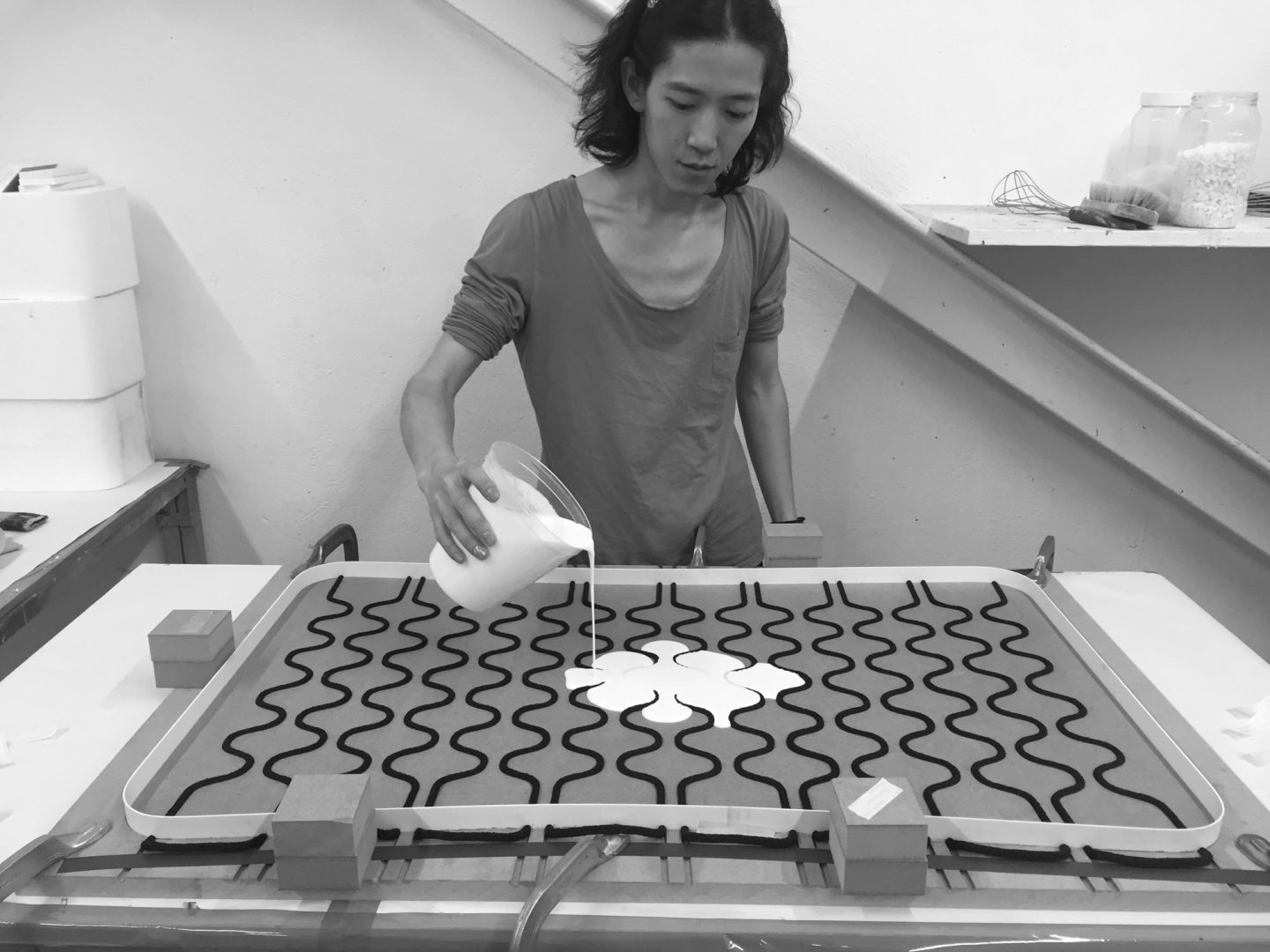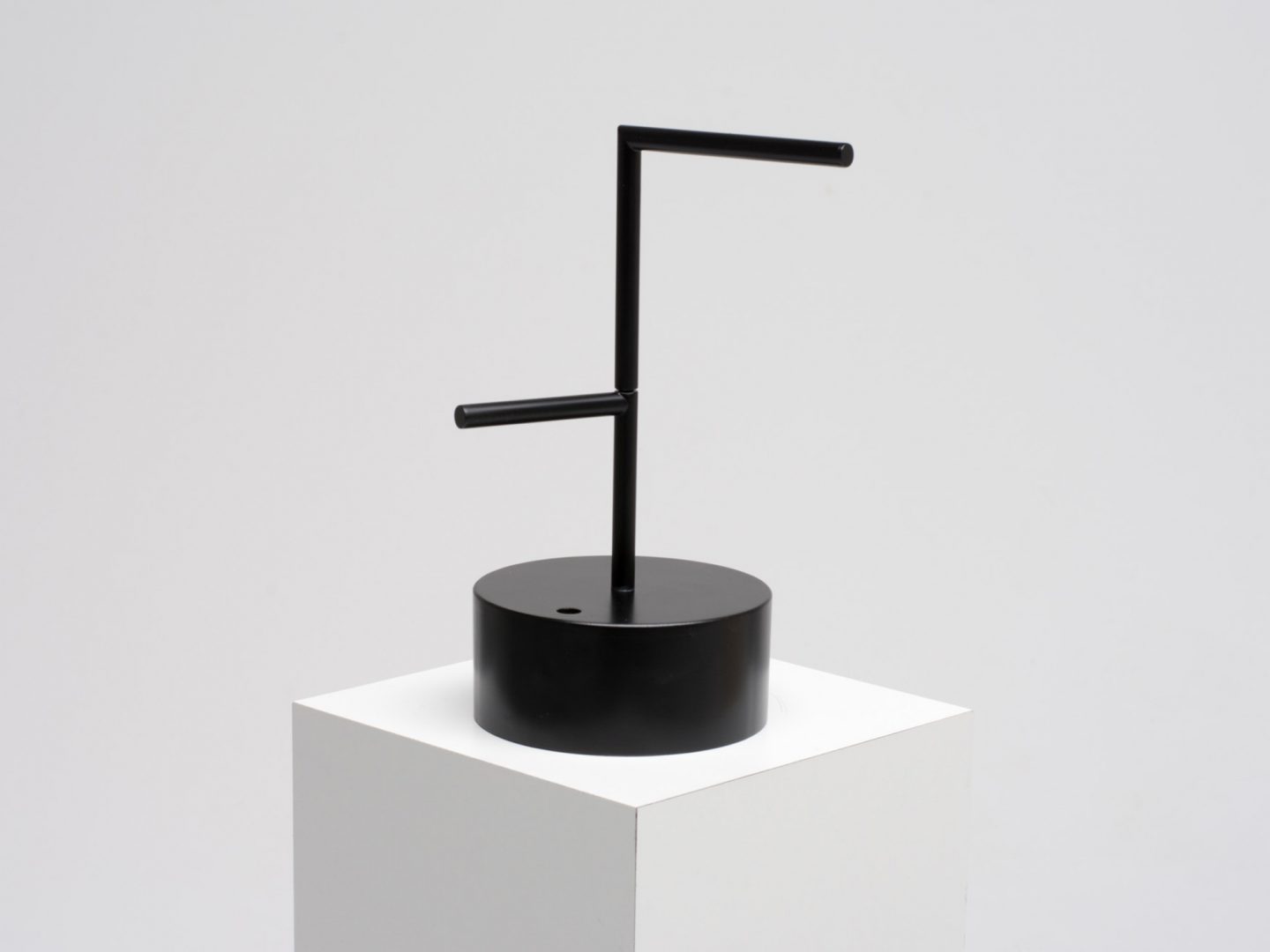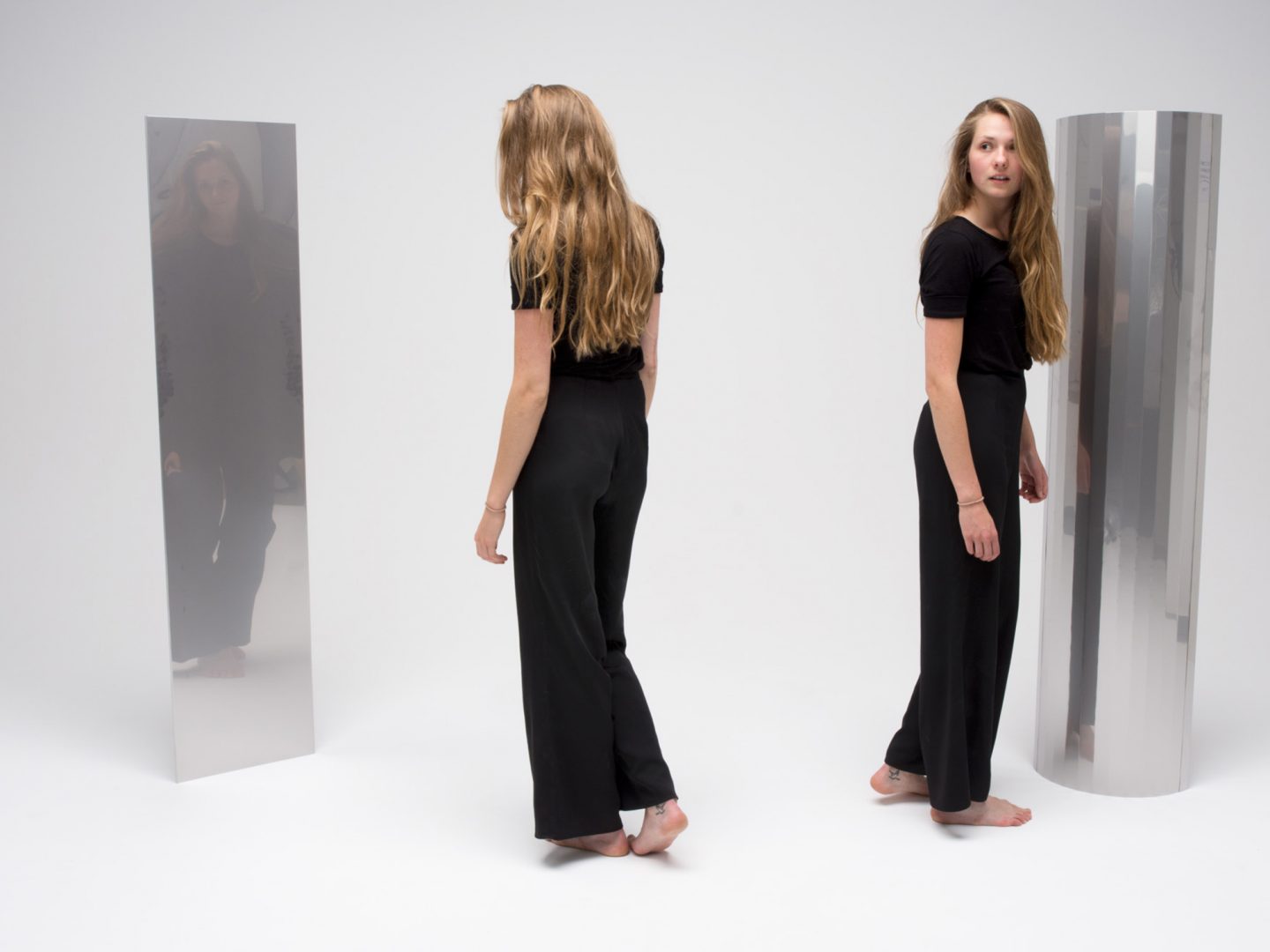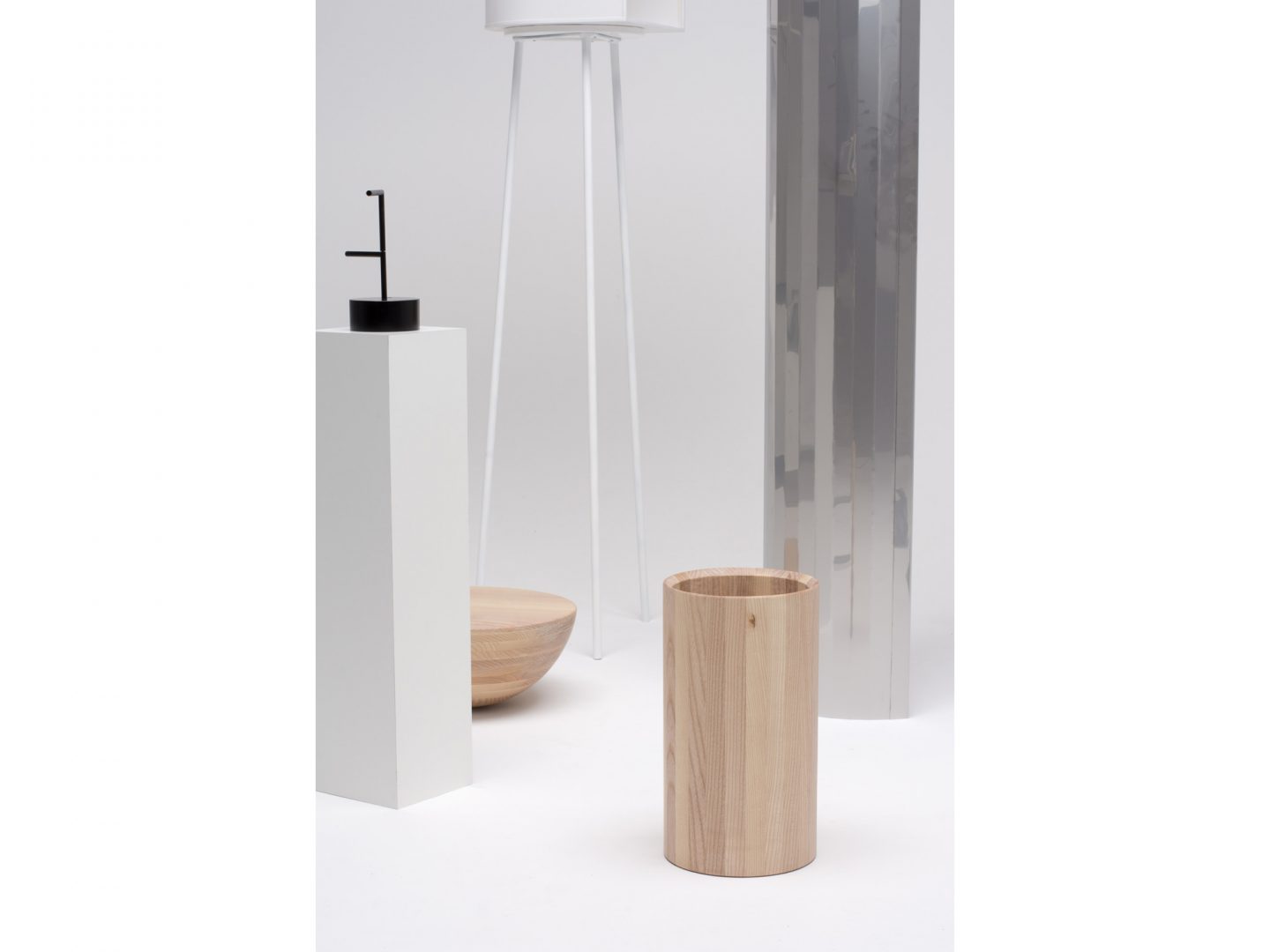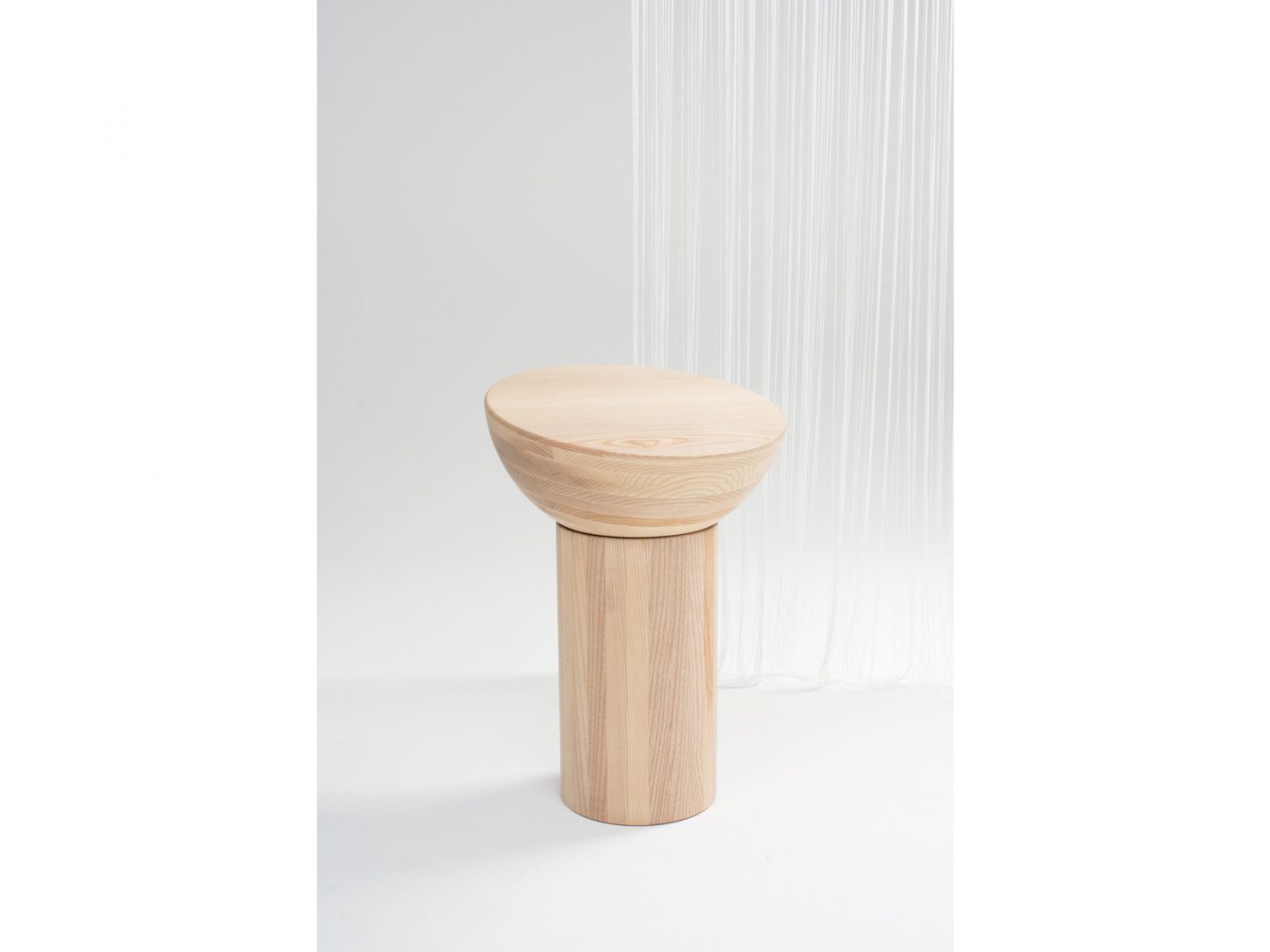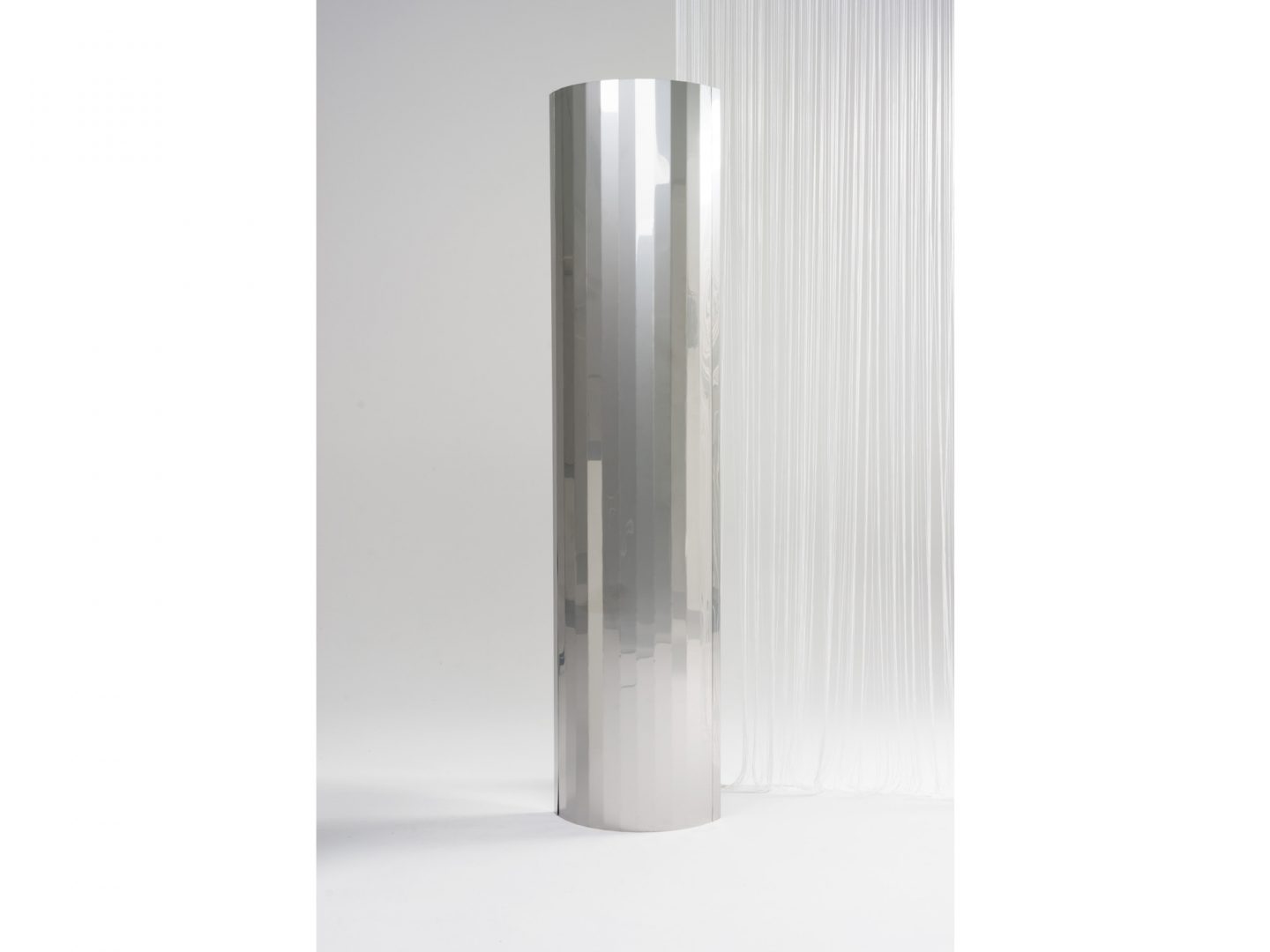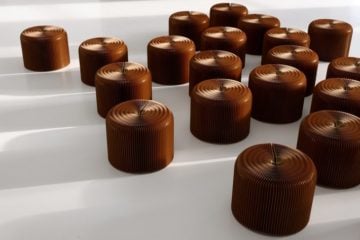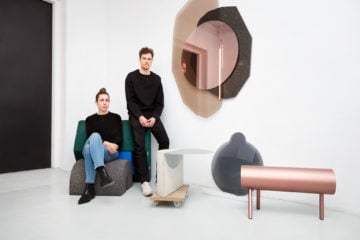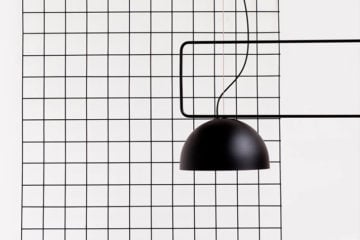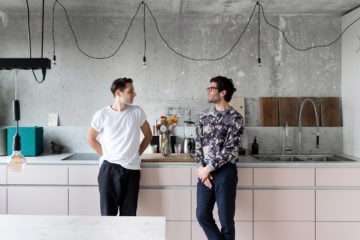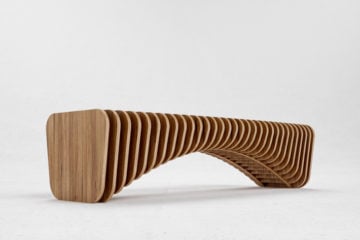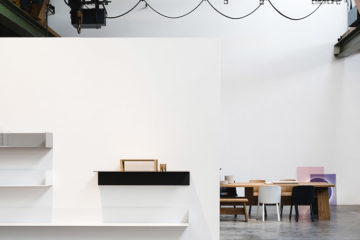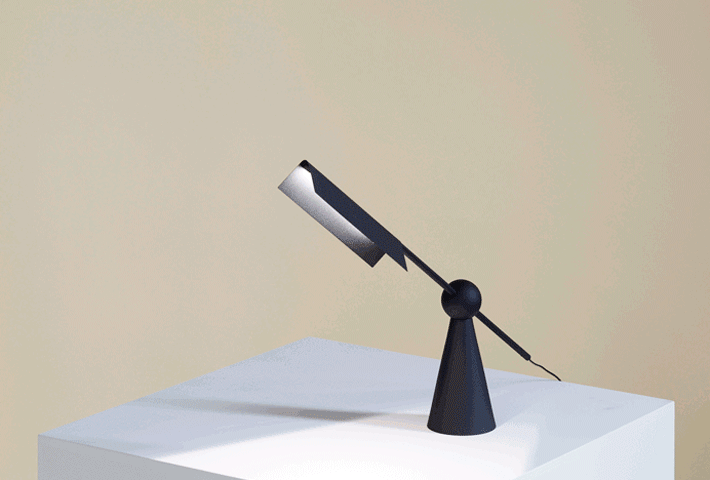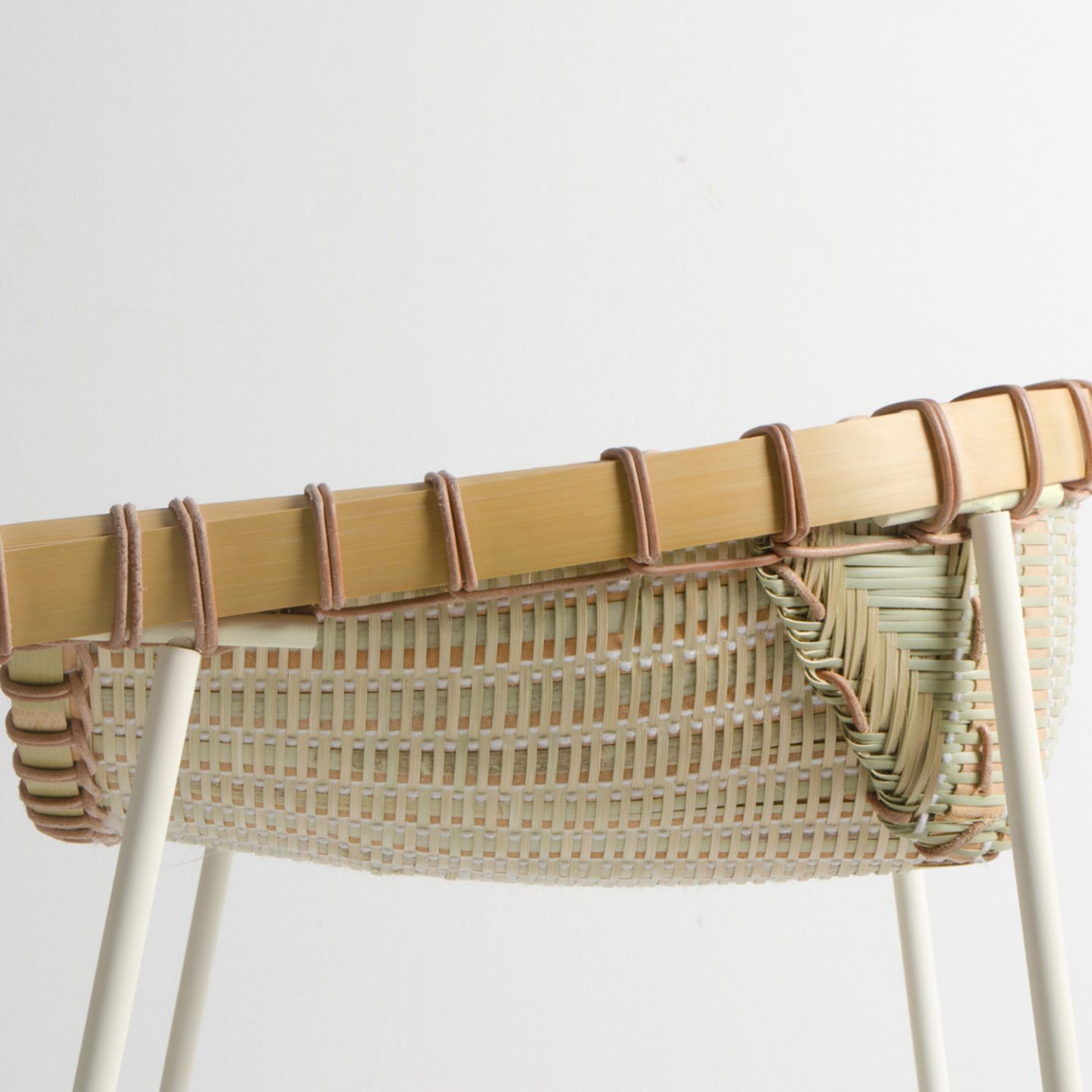
The Latest: Up-And-Coming Designers At IMM Cologne
- Name
- IMM Cologne
- Project
- Pure Talents
- Words
- Rosie Flanagan
Undoubtedly, one of the highlights of IMM Cologne was the Pure Talents Competition; and with it the discovery of innovative young design minds from around the world. In collaboration with Samsung The Frame TV, we spoke to the up-and-coming designers you should all be watching.
IMM Cologne’s Pure Talents is now in its 15th year; it is a contest created exclusively for designers who are still pursuing their studies or who are recent graduates, granting them access to industry insiders and a wide design fair audience. From participants in this year’s competition we found diverse and intriguing design concepts – from the highly conceptual furniture series, ‘Hyperreal’, which applies sociological thought to objects; to the intelligently functional ‘Fold It’ table, tellingly designed by students from the Bauhaus University in Weimar; and ‘Alces Alces 1&2’ a pair of chairs made from the waste-products of the Swedish moose-hunt.
_
Xiang Guan
‘Symbiotic Objects’ by Chinese-designer Xiang Guan is as philosophical as it is humorous, and as well designed as it is dysfunctional. Xiang’s thoughtful design piece examines humankind’s fraught relationship with objects, borne out of his research into waste and consumerism. ‘Symbiotic Objects’, Xiang explains, aims to make people reflect on their relationship with inanimate objects; “What if you had a symbiotic relationship to daily objects? If this symbiosis existed would we find more meaning and possibilities in everyday objects?” His work creates this symbiosis — the chair will not stand without human legs, the table must hook over shoulders in order to remain upright, and the light must be worn in order for its bulb to glow. This humbling and funny piece re-establishes the equilibrium between the animate and inanimate. Xiang asks us,“If symbiosis existed…would we be inclined to throw them [objects] away so readily? And could we eliminate unnecessary waste in the spirit of a sustainable world?”
‘Symbiotic Objects’ by Xian Guan
_
Alissa Arends, Leon Bucher & Yelim Kim
In their second semester at the Bauhaus University in Weimar, Alissa Arends, Leon Bucher and Yelim Kim created ‘Fold It’, a group project that they laughingly describe as being surprisingly successful. The collapsible, portable and functional table was inspired by their experiences at University; with class sizes that fluctuate, and sunshine that calls to be worked in, tables are often hefted from room to room, or from inside to outside. ‘Fold It’ proposes an intelligent solution that doesn’t compromise on aesthetics qualities for functionality. The lightweight structure and integrated joints allow it to be easily disassembled. The tabletop simply lifts out, and the legs are folded together. The simple structure of the design and its clean lines saw the project take out second place in this year’s Pure Talents competition.
‘Fold It’ by Alissa Arends, Leon Bucher & Yelim Kim
_
Victor Alge
Annually, approximately 100,000 moose are shot in Sweden; but the parts of their bodies that are deemed inedible, or unusable, are discarded after the hunt. ‘Alces Alces 1&2’ by Stockholm-based designer, Victor Alge, are direct products of the moose hunt. A hunter himself, Victor explains that he wanted to use the so-called ‘waste’ products in a meaningful way. “It’s a matter of respect,” he explains. “If you kill an animal, you should do your utmost to use as much of the animal as possible.” Victor developed this project with a local tannery, using the animal skin in its natural state, utilizing the unusual shaped parts of the hide that would usually be discarded, and embracing its parchment-like consistency. “Both products are made using the technique of sewing in wet leather parchment, and filling them with compressed air until they are dry,” Victor explains. When wet, the moose skin has the characteristics of a textile, once dry it is more like a plastic or a fiberglass. The smaller of the two pieces stands at a friendly angle, entirely composed of hide — with veins running alongside the stitch marks. The larger chair features a metal frame, which delicately sandwiches the moose skin cushioning.
‘Alces Alces 1&2’ by Victor Alge
Images © Hinke Tovle
_
Hiroyuki Morita
At just nine years old, Hiroyuki Morita (Studio Rope) designed his first chair. He has photos on his phone, smilingly pointing out the wheels that he attached to the ‘Massage Chair’ when he built it for his father; it wasn’t until much later that he realized industrial design was a career path that he could follow. The Japanese designer lives in Nagoya, an area with a sense of normality that he describes as necessary to his work; it tempers his design ideas. His chairs, ‘Celltastic’ and ‘Temi’ are examples of this expansive creativity, and his ability to take large ideas and convert them into thoughtful objects. ‘Celltastic’ was developed using latex and nylon threads, with the pattern of the thread controlling the elasticity of the latex. The resultant chair molds to your body when you sit. The ‘Temi’ takes its inspiration from traditional craft — a Temi is a handmade Japanese tool historically used for sorting grain that, in recent years, modern machinery has replaced. Hiroyuki’s ‘Temi’ reinterprets this traditional tool as furniture, taking the historic weaving techniques and traditional structure and altering them, ever so slightly, to create the woven seat of the stool.
‘Temi’ & ‘Celltastic’ by Hiroyuki Morita
_
Pia Regenbrecht
German designer Pia Regenbrecht takes digitization and presents it along with its sociological connotations as series of furniture. Her collection, ‘Hyperreal’ is designed to question everyday habits by granting contrary functions to inanimate objects. In order to understand the series, you are forced to interact with it. The table, with its rolling half-ball table-top, presents an opposition between productivity, should the flat remain level; and dysfunction, as it rolls to an angle beneath you. Similarly, the clock face is only legible if you stand directly above it — creating a tangible opposition between the present time, and possible futures or the past. The mirror, with its angled surface, reflects both self-focus and our surroundings. Pia explains; “What does living space signify in the era of the digital hyperspace of the World Wide Web? Digitization is moving into our private living space — constant, global interconnectedness is breaking down the boundaries of space and time.” ‘Hyperreal’ aims to direct our attention to the present, creating dislocating experiences that jar with our expected reality.
‘Hyperreal’ by Pia Regenbrecht
—
